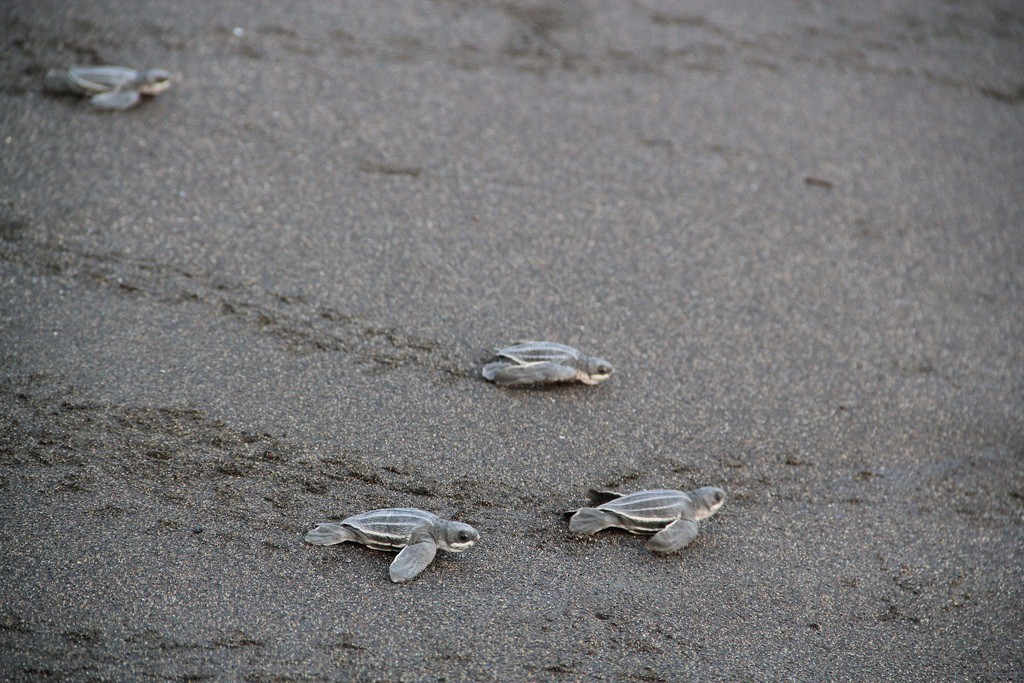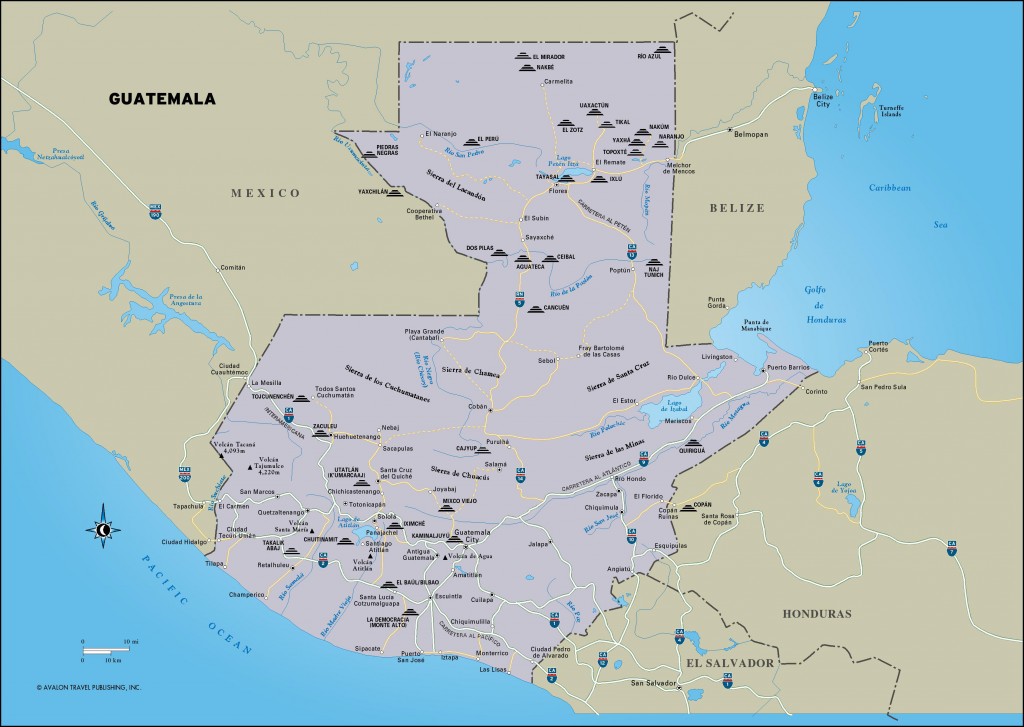Guatemala is part of Central America’s “Northern Triangle”—bordered by Mexico to the north and the west, by the Pacific Ocean to the southwest, El Salvador and Honduras to the southeast, and Belize to the east. Studded by volcanoes, much of southern Guatemala is mountainous highlands, descending to a tropical environment along the Pacific coastline. The low-lying northern region of Petén is sparsely populated in juxtaposition with its history of thriving Mayan kingdoms, as evidenced by the ruins at Tikal, Yaxhá, Quiriguá, and elsewhere. Fourteen ecoregions with a wide assortment of rivers, swamps, forests, and lagoons make Guatemala a biodiversity hot spot, home to 1,246 known species of fauna and countless more species of flora.
Guatemala’s population of 15 million is the largest in Central America.Guatemala’s population is just as diverse. Approximately more than 50 percent of the population is indigenous, composed of 21 distinct Maya groups speaking 20 or more different languages, with Spanish the second language for many. Guatemala’s population of 15 million is the largest in Central America. Unfortunately, more than half of those people live in poverty (the World Bank estimates the gross national income per capita is US$2,870).

Akazul monitors the nesting beach in order to better understand Guatemala’s sea turtle populations and provides educational activities and community initiatives. Photo © Tomas C C, licensed Creative Commons Attribution.
As a result, most of the volunteer organizations working in Guatemala are focused on people, with many opportunities to teach and care for children at schools and orphanages, provide medical services such as checkups and dental care, help families improve homes through new construction (or the installation of less-polluting stoves), or empower women and preserve culture through the development of textile weaving projects. Those interested in conservation can teach environmental education to children or participate in the construction of green schools, built with recycled waste such as used tires and discarded bottles.
With the chance to explore colonial towns and extravagant crafts markets, hike volcanoes and lake ridges, and visit Mayan ruins or Pacific beaches, volunteers will find in Guatemala a unique combination of cultural immersion and local opportunities.

Guatemala
Excerpted from the First Edition of Moon Volunteer Vacations in Latin America.

